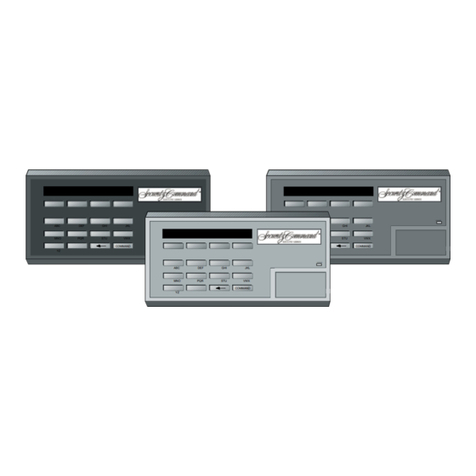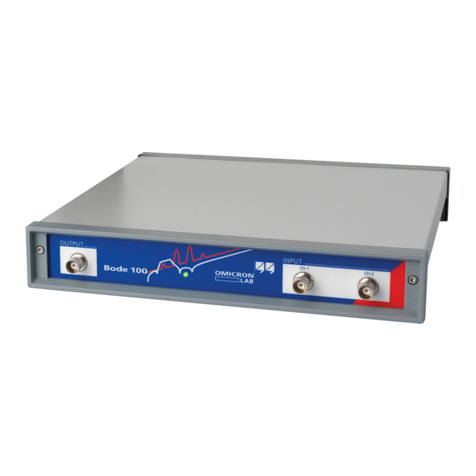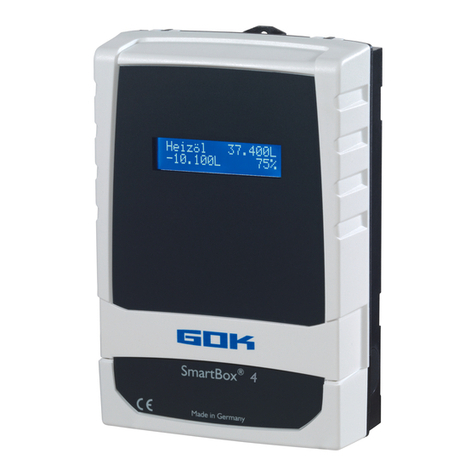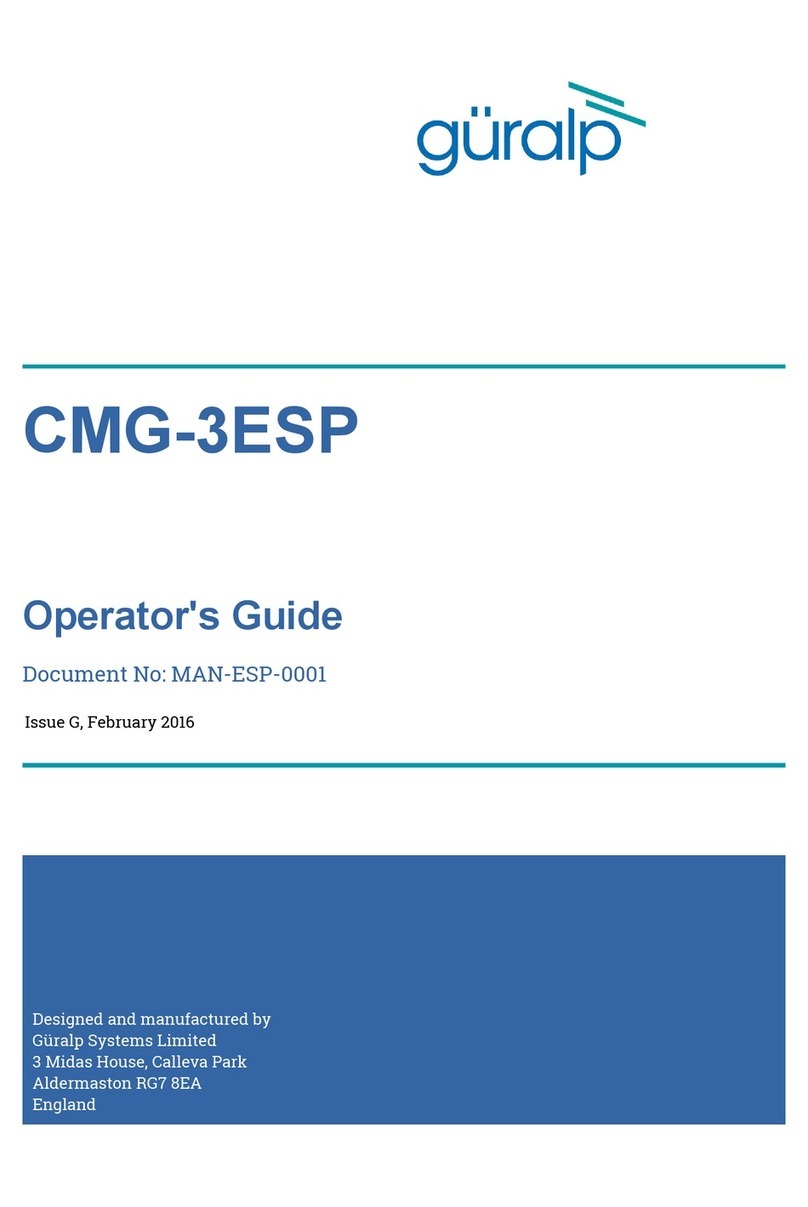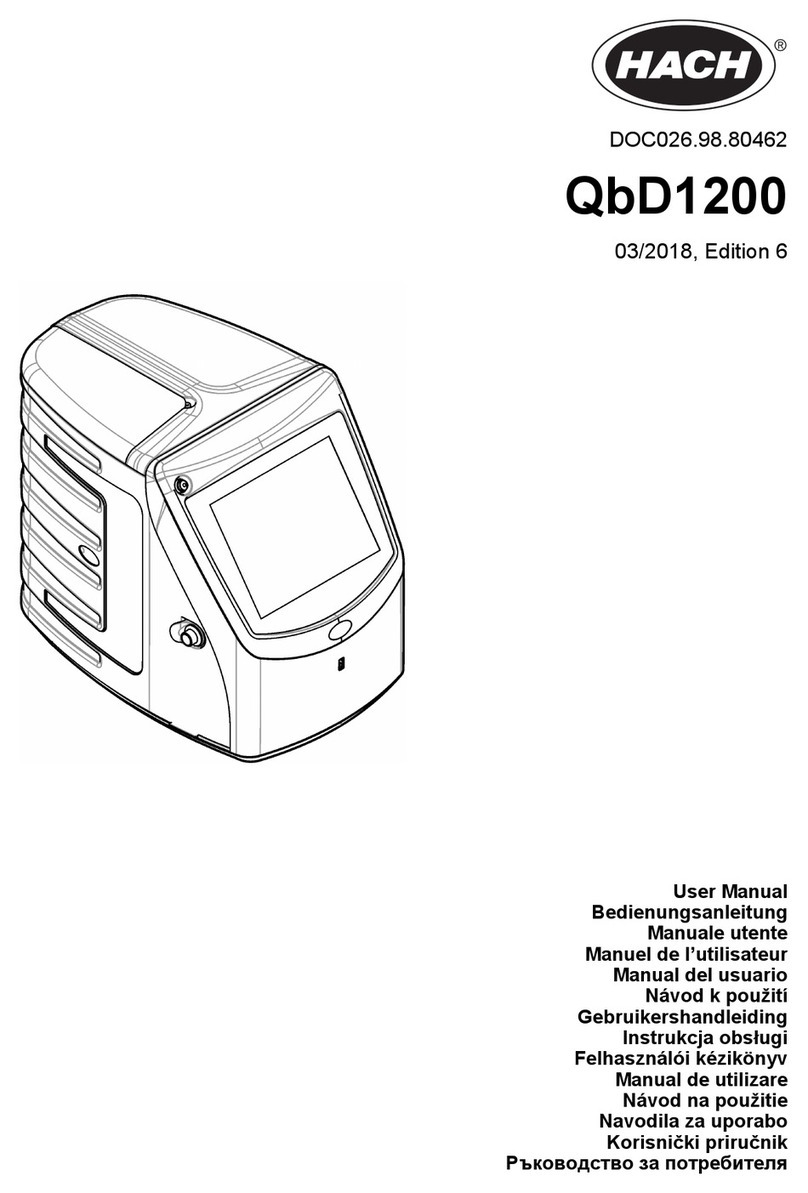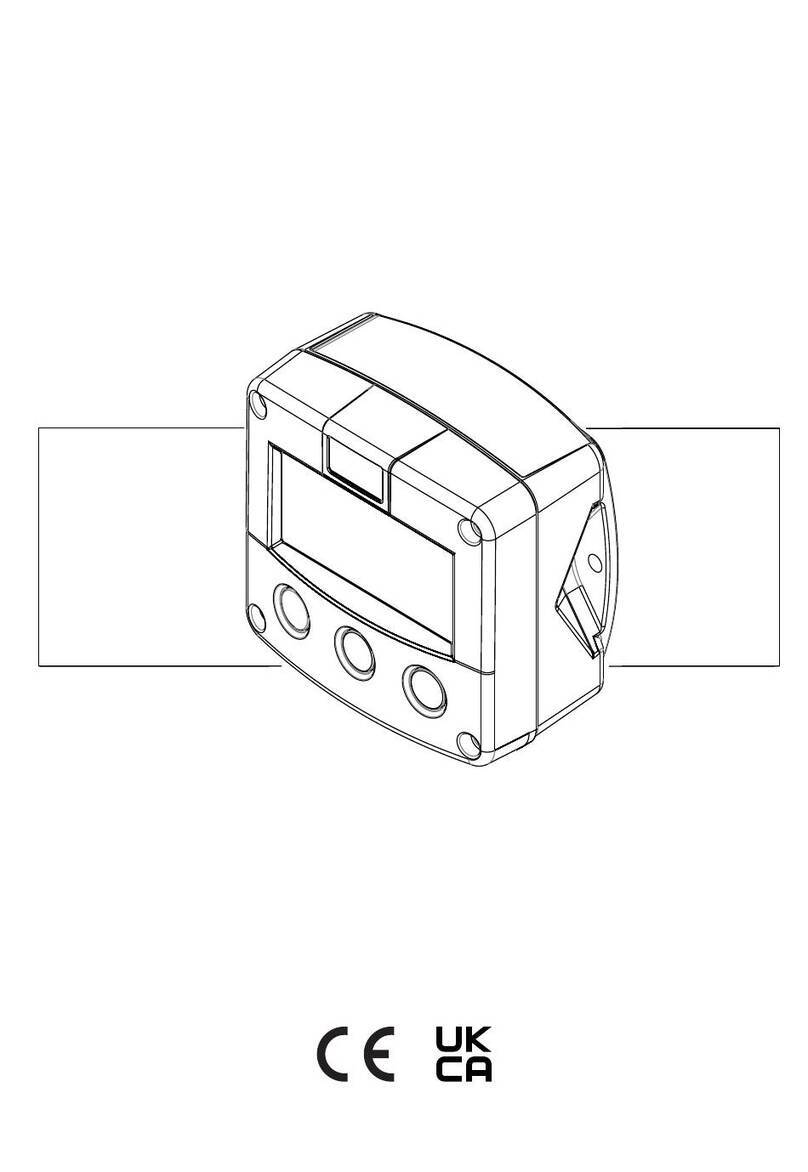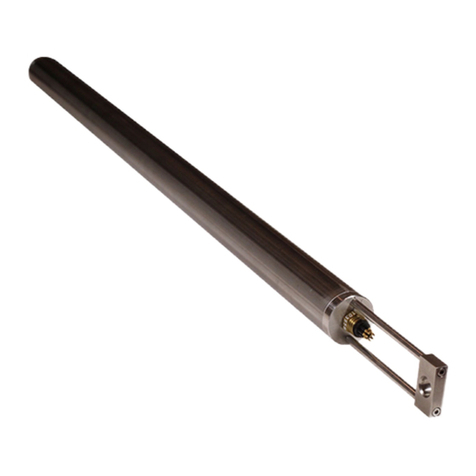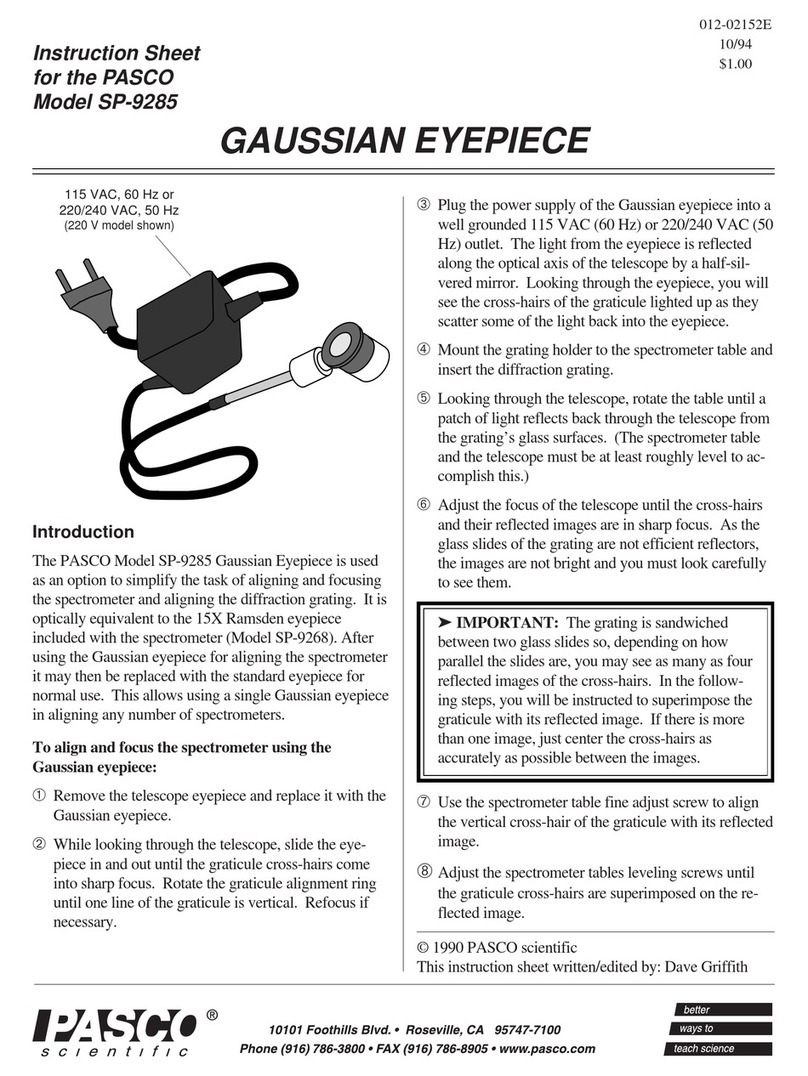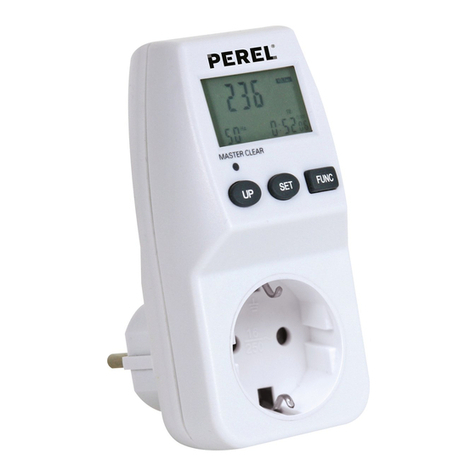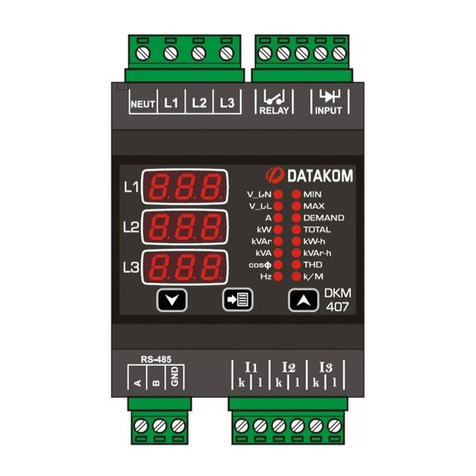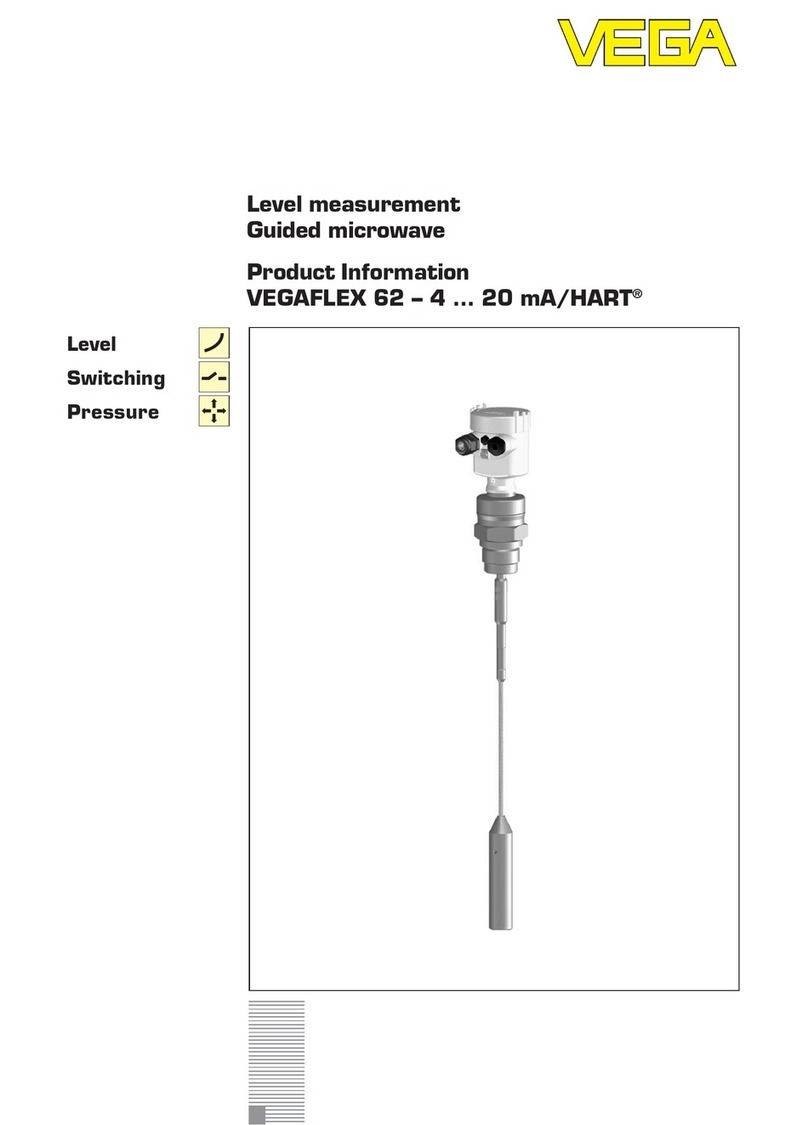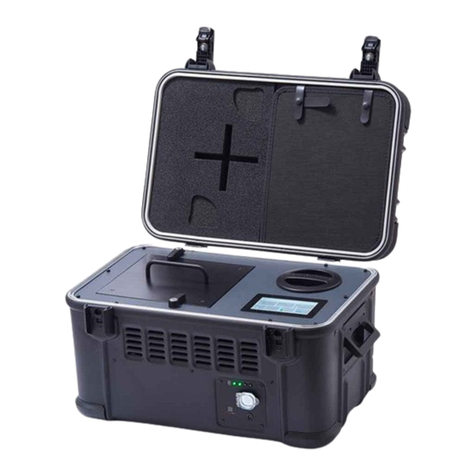Better Geiger S-1 User manual

User Manual
Better Geiger
Radiation Detector
Model S-1
Read entire manual and all
warnings before use
www.bettergeiger.com


Table of contents
1. Warnings
2. General Information
3. Technical Specifications
4. Basic Operation
5. Display Modes
6. Understanding Display Numbers
7. General Tips
8. Troubleshooting
9. Raw Signal Access
10. FCC User Guide Statement
11. Declarations of Conformity

1. Warnings
This device is intended to be used only for
educational purposes. There is no guarantee of
performance specifications, accuracy, or reliability.
The detector should not be used for activities or
decision-making related to health and/or safety.
Any use of the device not in accordance with this
user guide voids any applicable warranty.
The detector should never be dropped or
otherwise mechanically shocked, nor subjected to
moisture, vibration, or dust. Operating
environment should be between -10°C and 40°C
(14°F to 104°F) and relative humidity <80%. Long
periods of direct sun exposure should be avoided.
Battery terminals and compartment should be kept
clean, dry, and free of debris. Batteries should be
removed for long-term storage of the detector due
to risk of leakage and contamination.
Unless authorized by the manufacturer, enclosure
screws should not be removed, and internal
components should not be modified or accessed.

2. General Information
More details about the detector technology,
capabilities, and limitations are available at:
www.bettergeiger.com
The Better Geiger Model S-1 is designed to
measure X-ray, gamma, and to a limited extent
beta ionizing radiation. It is not sensitive to alpha
radiation, including elevated radon concentrations
in air. The sensitive element inside the S-1 is a
solid scintillator. X-ray/gamma radiation tends to
easily penetrate the plastic enclosure of the S-1
and reach the scintillator. Beta radiation may or
may not reach the scintillator and be detected
depending on the energy and incoming direction of
the beta particles. Compared to a radiation
detector with a traditional Geiger-Mueller (GM)
tube, the Better Geiger will typically exhibit higher
sensitivity to X-Ray/gamma and lower sensitivity
to beta particles. When the detector is inside the
rubber shock protector and/or the waterproof
enclosure, beta sensitivity is further reduced.
“Dosimetry” means measuring radiation levels
specifically in the context of human health effects.

Except for very specialized applications, dosimetry
only involves X-ray/gamma measurement and not
alpha/beta measurement. If a detector is reacting
to alpha or beta in significant quantities, then this
will almost always result in an extremely over-
estimated and invalid dose rate indication. Due to
the Better Geiger having relatively low sensitivity
to beta, it is unlikely to exhibit this over-estimation.
Typical GM detectors, however, do have a high
sensitivity to beta radiation, therefore they are at
high risk for extreme over-estimation of dose rate
in environments where beta particles are present
in significant quantities. Examples of objects which
might be primarily beta emitters where this
behavior can be be seen include some
“Fiestaware” style antique ceramics, some antique
“uranium glass” items, and some naturally
occurring radioactive minerals such as uranium
ore.
The preferred direction for measuring a localized
beta emitter with the Better Geiger is towards the
bottom of the detector, exactly opposite the printed
symbol indicating the scintillator position.

3. Technical Specifications
Values are approximate and subject to change.
(10 µSv/hr = 1 mrem/hr)
•Dimensions without rubber protector:
73 x 26 x 118 mm3
(2.9 x 1.0 x 4.6 in3)
•Weight, detector only without batteries:
120 g (4 oz)
•Allowed range of operating conditions:
-10°C to 40°C (14°F to 104°F)
<80% relative humidity
•OLED display 27x19 mm2(1”x0.75”)
•Power supply: 2x standard AA batteries,
typical life >40 hours for alkaline type
•Sensitive to X-ray/gamma and beta
•Minimum sensitive energy: 50 keV
•Maximum CPM (counts/min): 750,000
•Approximate maximum dose rate
@ 1250 keV (Co-60 average energy):
7,000 µSv/hr (= 700 mrem/hr)
@ 662 keV (Cs-137 energy):
4,000 µSv/hr (= 400 mrem/hr)
•Estimated dose rate uncertainty ±30%

•Qualitative dose rate indications
NORMAL: 0-1 µSv/hr
HIGH: 1-10 µSv/hr
DANGER: >10 µSv/hr
•Screen update interval 1-4 s
•Cumulative measured values (time,
average CPM, average µSv/hr, total
µSv) are calculated over the entire time
period since the device was last
powered on, and those values are reset
to zero when the device is powered off
4. Basic Operation
The detector is powered
by two AA batteries. The
battery holder is on the
back side of the device,
accessible by a slide-away
cover as shown here →

Care should be taken to orient the “+” and “-” ends
of the batteries so that they match the “+” and “-”
marked positions on the case.
Alkaline or lithium batteries are preferred but the
device will also work with most standard
rechargeable AA batteries. When approaching the
end of battery life, the first indication will be a
reduced volume coming from the speaker (less
loud clicking noise). After that, the device will
eventually shut down. When in doubt test with
fresh batteries.

The display mode button cycles between the six
display modes (described in the following section).
When the device powers on it begins in the first
display mode. From the first mode, each button
press changes to the next mode unless the device
is in the 6th mode. After the 6th mode, another
button press will either return the device back to
the first mode or to a device information display
mode, depending on when the detector was
manufactured. When in device information display
mode, another button press will return to the first
display mode.
5. Display Modes
Mode 1: Bar graph displays dose across the top of
the screen scaled logarithmically from 0.01 to
10 µSv/hr. Main number displays current dose rate
in µSv/hr. Lower left word indicates qualitative
range (“NORMAL”, “HIGH”, or “DANGER”).
Bottom right indicates display number unit
(indicated as “uS/h” on screen)

Mode 2: Same as mode 1 but display number is
mrem/hr (indicated as “mr/h” on screen)
Mode 3: Same as mode 1 but display number is
raw counts per minute (CPM) interaction rate
before dose rate estimate is calculated.
Mode 4: Larger graphical bar graph display of
dose rate from 0.01 to 10,000 µSv/hr, scaled
logarithmically with each decade indicated.
Mode 5: Shows cumulative measured values since
power was turned on –time, average CPM,
average µSv/hr, total µSv.
Mode 6: “Dark” mode, reduced power mode, only
shows a small flashing circle.
6. Understanding Display Numbers
Counts per minute (CPM) gives the raw rate of
detected interactions in the scintillator. Incoming
X-ray/gamma photons can have higher or lower
energies, but the CPM value only counts
interactions.

Radiation dose is a unit related to the health effect
on the human body of radiation. For X-rays and
gammas it depends not only on the quantity of
photons entering the human body but also the
energy of those photons (among other factors).
Higher energy photons have a larger effect on the
body in terms of dose and health hazards. Values
of dose displayed by the detector take the energy
of interactions in the scintillator into account to
improve accuracy of dose estimates.
Sievert (Sv) or rem are generally the basic units of
radiation dose. One Sievert is equal to 100 rem.
More commonly used are microsievert (µSv, one
millionth of a Sievert) or millirem (mrem, one
thousandth of a rem). One mrem is equal to 10
µSv. A dose rate is the amount of dose which is
being delivered per unit time, typically per hour
(µSv/hr or mrem/hr). Dose generally refers to
various types of exposure but in this document it
refers to effective dose and essentially assumes
the whole body is exposed uniformly to a given
radiation field strength.
All people are exposed to background radiation
from natural and unnatural sources. The amount

can vary widely but 2,000-3,000 µSv per year is
common. At the time of writing this document, in
the US the annual whole-body limit allowed for
workers exposed to radiation is 50,000 µSv.
The qualitative limits displayed of “NORMAL”,
“HIGH”, and “DANGER” are arbitrarily defined with
thresholds of 1 µSv/hr for “HIGH” and 10 µSv/hr
for “DANGER”. The ALARA principle –As Low As
Reasonably Achievable –is intended to guide all
radiation exposure. In other words, “NORMAL”
and “HIGH” do not mean an absence of danger.
To reach the previously described 50,000 µSv
occupational dose limit throughout the course of a
year would require about 6 µSv/hr exposure 24/7
for the entire year.
For comparison, a typical medical chest X-ray
might expose a person to 100 µSv while a medical
CT (computerized tomography) scan might expose
a person to around 10,000 µSv.
Acute radiation syndrome (ARS) or “radiation
sickness” can result if an extremely large radiation
dose is received in a short amount of time. The
U.S. CDC (www.cdc.gov) indicates that ARS can

occur with a dose above approximately 1 Sv or
1,000,000 µSv. The acute dose at which the
chance of death is around 50% is 4 Sv.
7. General Tips
To measure general X-ray/gamma dose rate
levels in a uniform radiation field, the detector
orientation is typically not important. If there is a
strong point-like radiation source then the detector
response will strongly depend on distance from
the source. This is because the intensity of a
radiation field coming from an X-ray/gamma
source tends to decrease roughly according to
I=1/D2where “I” is intensity and “D” is distance.
For example, if distance is doubled, then intensity
is 1/4 as much, if distance is tripled, intensity is 1/9
as much, or if distance is increased 10x then
intensity is about 1/100 as much. Therefore, when
searching for radioactive material or attempting to
verify whether not an object is radioactive, the
sensor position should be placed as close as
possible to the potentially radioactive material.
For ordinarily encountered radiation levels the
display will update every 4 seconds. At very high

levels it will update faster, as quickly as every 1
second. Except for Mode 5, the values shown are
usually averaged over the last 10 to 40 seconds,
and the detector automatically attempts to balance
accuracy with responsiveness. For best accuracy
in Modes 1-4 it is generally best to place the
detector in one place for at least 40 seconds.
For the best accuracy it is recommended to place
the detector in a location to be measured, turn it
on, then leave it there for at least five minutes.
Then, the values in Mode 5 can be checked to see
average behavior over the measured time period.
To measure whether or not an object is
radioactive, it is generally best to perform one
such a measurement with the detector far from the
object (one meter or a few feet away) then another
with the detector as close as possible to the
object. If the difference is roughly 30% or more,
then one can be relatively confident that the object
is significantly radioactive. If the difference is
smaller than 30%, then longer measurements
might be needed to be certain. Doing two such
pairs in series (far, close, far, close) is a good way
to confirm a measurement.

8. Troubleshooting
There is no low battery indicator on the display. If
the clicking sound coming from the speaker begins
to decrease noticeably in volume, if the dose rate
or count rate value seems abnormally low, if the
device loses power quickly after being powered
on, or if the device will not power on at all then the
batteries might need to be changed. When in
doubt, test with new batteries. Similar behavior
can appear if power switch is fully in the “on”
position. Battery contacts should also be checked
in case of failure to power on. If alkaline batteries
leak in the battery compartment, then this can
cause problems. If battery orientation is not correct
(+/- switched) or if the batteries are not fully seated
in their positions, then the device may fail to turn
on. In case of any other problems contact the
manufacturer directly via: www.bettergeiger.com
9. Raw Signal Access
Access unauthorized by manufacturer voids any
applicable warranty and results in the user being
responsible for damage. The raw signal access is

located near the hole next to the display. There
are four contact points:
1. Ground connection
2. Analog dose. This is an uncalibrated
analog signal from 0 to 5V outputting
dose values up to ~10 µSv/hr, scaled
logarithmically. User should perform
calibration measurements at multiple
dose levels to calibrate.
3. Analog pulse. This is an analog signal
from 0 to 5V with a variable width of
roughly 60 µs. Higher amplitude pulses
are wider. The amplitude is
approximately proportional to the energy
deposited in the scintillator for a given
radiation interaction.
4. Digital pulse, 5V indicating one count of
radiation has taken place. The signal
has a variable width roughly 0.5-2 µs
depending on energy deposition.

10. FCC User Guide Statement
NOTE: This equipment has been tested and found to comply with
the limits for a Class B digital device, pursuant to part 15 of the
FCC Rules. These limits are designed to provide reasonable
protection against harmful interference in a residential installation.
This equipment generates, uses and can radiate radio frequency
energy and, if not installed and used in accordance with the
instructions, may cause harmful interference to radio
communications. However, there is no guarantee that interference
will not occur in a particular installation. If this equipment does
cause harmful interference to radio or television reception, which
can be determined by turning the equipment off and on, the user is
encouraged to try to correct the interference by one or more of the
following measures:
-Reorient or relocate the receiving antenna.
-Increase the separation between the equipment and receiver.
-Connect the equipment into an outlet on a circuit different from
that to which the receiver is connected.
- Consult the dealer or an experienced radio/TV technician for help.
Modifications not expressly approved by the manufacturer could
void the user's authority to operate the equipment under FCC rules.
11. Declarations of Conformity
FCC Supplier's Declaration of Conformity
47 CFR § 2.1077 Compliance Information
Product Name: Better Geiger S-1 Radiation Detector
Description: Handheld portable radiation measurement
deviceResponsible Party: www.bettergeiger.com
This device complies with the following regulations: 47 CFR Part
15, Subpart B –Unintentional Radiators, Class B
1. 15.107 Conducted emissions

2. 15.109 Radiated emission limits; general requirements
FCC Compliance Statement - This device complies with Part 15 of
the FCC Rules. Operation is subject to the following two conditions:
(1) This device may not cause harmful interference, and (2) this
device must accept any interference received, including
interference that may cause undesired operation.
Location: Denver, CO, USA
Signed:
Date: Feb 8, 2022, Printed Name: Robert Adams, Title: Owner
Declaration of Conformity
In accordance with EN ISO/IEC 17050-1:2010
Manufacturers Name: 136 Technology, LLC.
Manufacturers Address: Denver, CO 80219, U.S.A.
Application of Council Directives:
Low Voltage 2014/35/EU
EMC 2014/30/EU
RoHS 2 2011/65/EU
Standards:
EMC - EN 61326-1:2013 , EN 55011:2016
Safety - IEC 61010-1:2010, EN 61010-1:2011
RoHS2 Technical Documentation- EN 63000:2018
Product Name: Better Geiger S-1 Radiation Detector
Product Model Number: S-1
We, the undersigned, hereby declare that the equipment specified
above conforms to the above Directives and Standards.
Location: Denver, CO, USA
Signature:
Date: Feb 8, 2022. Full Name: Robert Adams. Title: Owner

Table of contents



